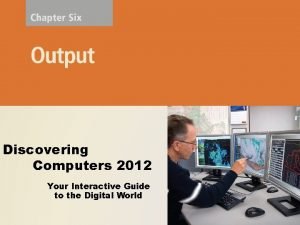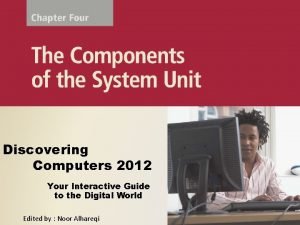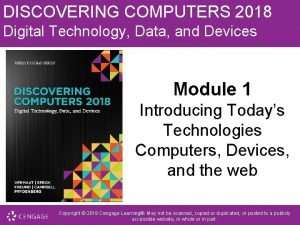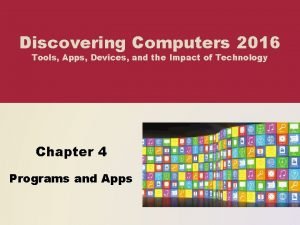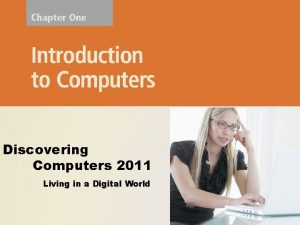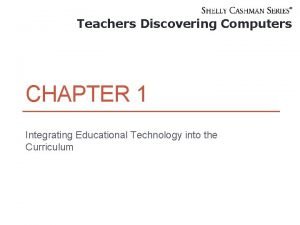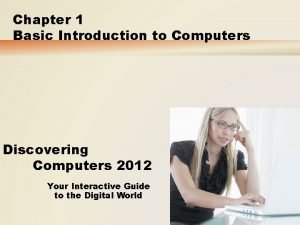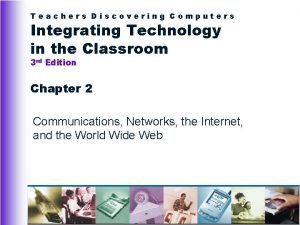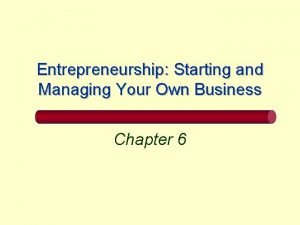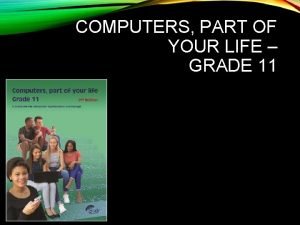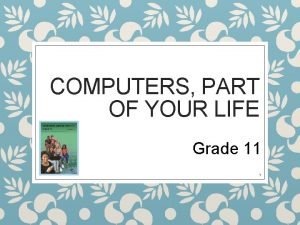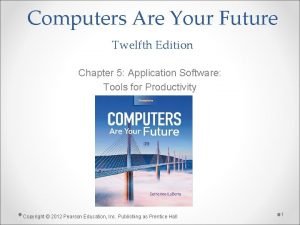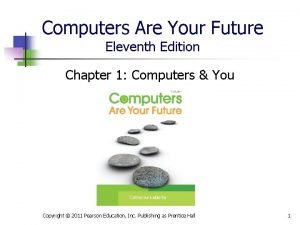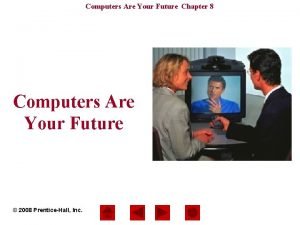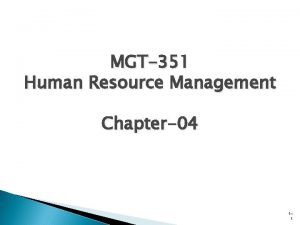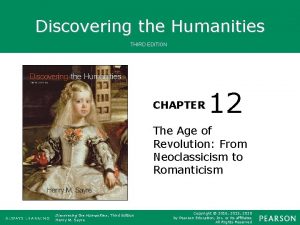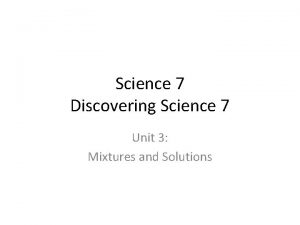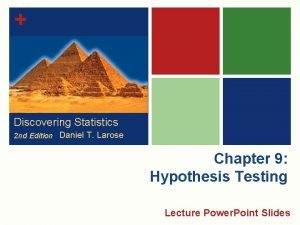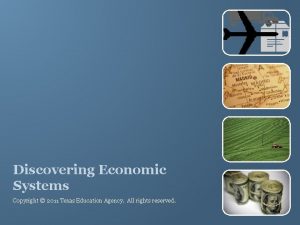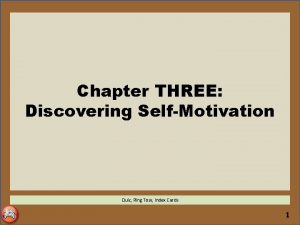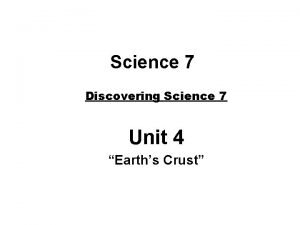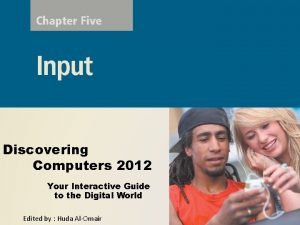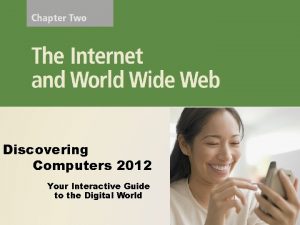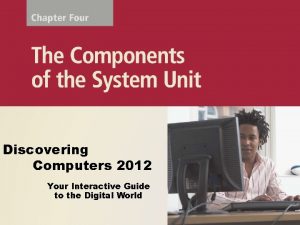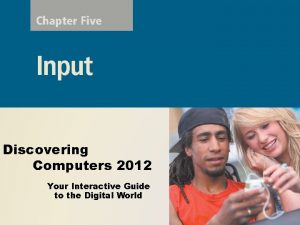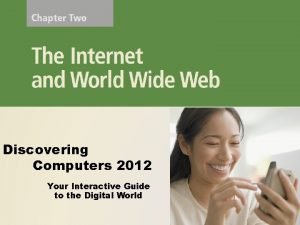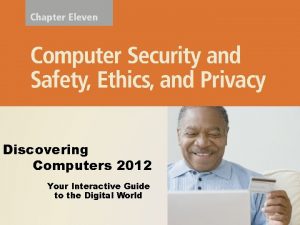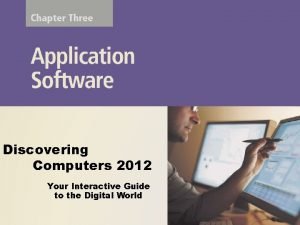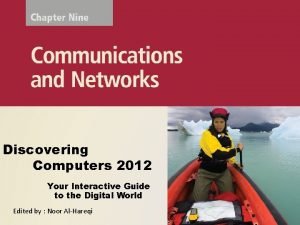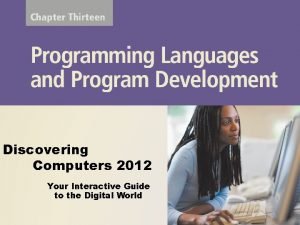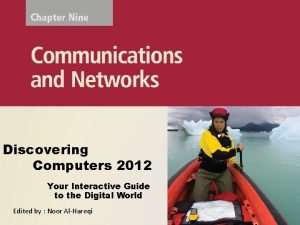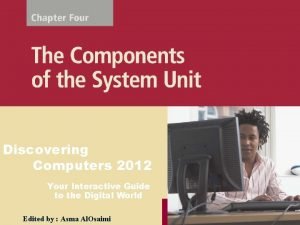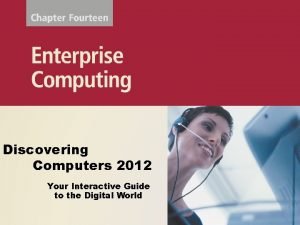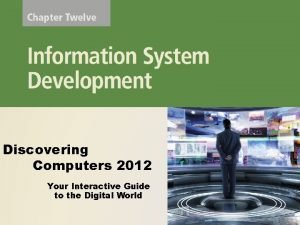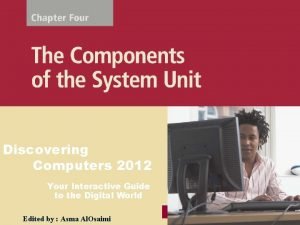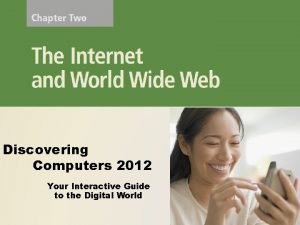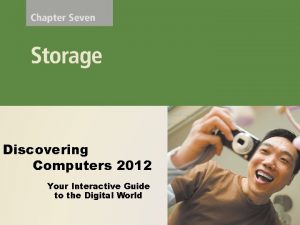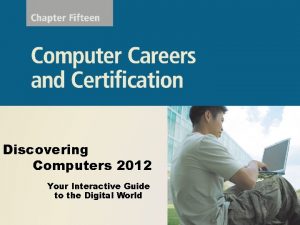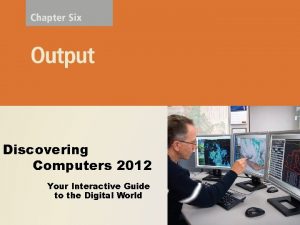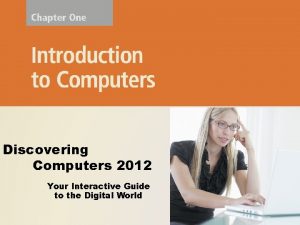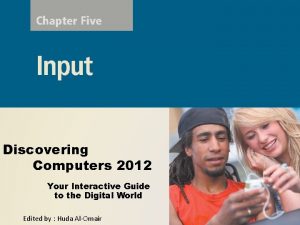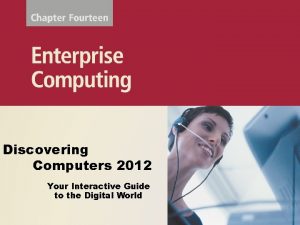Discovering Computers 2012 Your Interactive Guide to the























- Slides: 23

Discovering Computers 2012 Your Interactive Guide to the Digital World Edited by : Noor Alhareqi

The System Unit • The system unit is a case that contains electronic components of the computer used to process data. • Made of metal or plastic to protects the internal components from damage. • All computers have a system unit. It is available in variety of shapes & sizes. Page 210 Figure 4 -1 Discovering Computers 2012: Chapter 4 2

Discovering Computers 2012: Chapter 4 3

The System Unit • The inside of the system unit on a desktop personal computer includes: Drive bay(s) Power supply Sound card Video card Processor Memory Page 211 Figure 4 -2 Discovering Computers 2012: Chapter 4 4

Motherboard • The motherboard is the main circuit board of the system unit. • Contains expansion slots, processor chips, and memory slots • Sometimes called a system board Page 212 Figure 4 -3 Discovering Computers 2012: Chapter 4 5

Motherboard • Most computers use integrated circuits also called chips , for their CPU and main memory. • Memory chips are installed on memory module( card) that fit in a slot on the mother board. • What is a chip? • Small piece of semi-conducting material on which integrated circuits (IC) are etched. • IC contain many microscopic pathways capable of carrying electrical current. • Each IC can contain millions of elements such as resistors, capacitors, transistors. Next

Processor • The processor, also called the central processing unit (CPU), interprets and carries out the basic instructions that operate a computer – Contain a control unit and an arithmetic logic unit (ALU) that work together to perform processing operations Multi-core processor Page 213 Dual-core processor Discovering Computers 2012: Chapter 4 Quad-core processor 7

Processor Page 213 Figure 4 -4 Discovering Computers 2012: Chapter 4 8

Processor • The control unit is the component of the processor that directs and coordinates most of the operations in the computer. – Handles the transmission of data into and out of the CPU and supervises its overall operations. – Its interprets each instruction issued by a program & then initiates the appropriate action to carry out the instruction. • The arithmetic logic unit (ALU) performs arithmetic, comparison, and other operations. Page 214 Discovering Computers 2012: Chapter 4 9

Processor • For every instruction, a processor repeats a set of four basic operations, which comprise a machine cycle Page 215 Figure 4 -5 Discovering Computers 2012: Chapter 4 10

Processor The processor contains registers, that temporarily hold data and instructions The system clock controls the timing of all computer operations Page 216 Discovering Computers 2012: Chapter 4 11

Processor Registers • The registers are special storage areas in the CPU. • Their function is to hold instructions, data values, memory addresses of both the instructions and data. • There are 4 basic types of it: CU, ALU • Instruction register hold instruction • Address register hold address of( data , next instruction ). • Storage register store data retrieved from main memory prior to processing. • Accumulator store the results of arithmetic & logic operations Discovering Computers 2012: Chapter 4 12

Processor System clock • It generates regular electronic pulses , or ticks, that control the timing of all computer operations ( i. e. set operating pace of components of system unit) • Pace of system clock is clock speed. Most clock speeds are in the gigahertz (GHz) range (1 GHz = one billion ticks of system clock per second). Discovering Computers 2012: Chapter 4 13

Processor • Most current personal computers support pipelining – Processor begins fetching a second instruction before it completes the machine cycle for the first instruction Pages 215 – 216 Figure 4 -6 Discovering Computers 2012: Chapter 4 14

Processor • Parallel processing uses multiple processors simultaneously to execute a single program or task – Massively parallel processing involves hundreds or thousands of processors Page 220 Figure 4 -11 Discovering Computers 2012: Chapter 4 15

Processor • The leading manufacturers of personal computer processor chips are Intel and AMD Pages 216 – 217 Figure 4 -7 Discovering Computers 2012: Chapter 4 16

Processor • Determine how you plan to use a new computer before selecting a processor Page 218 Figure 4 -8 Discovering Computers 2012: Chapter 4 17

Processor • A processor chip generates heat that could cause the chip to burn up • Require additional cooling – Heat sinks – Liquid cooling technology Pages 219 - 220 Figures 4 -9 – 4 -10 Discovering Computers 2012: Chapter 4 18

Data Representation Analog signals are continuous and vary in strength and quality Digital signals are in one of two states: on or off • Most computers are digital recognize only two discrete states: on or off. • Use a binary system to recognize two states • Use number system with two unique digits: 0 and 1, called bits (short for binary digits) Page 221 Discovering Computers 2012: Chapter 4 19

Data Representation A computer circuit represents the 0 or the 1 electronically by the presence or absence of an electrical charge Page 221 Figures 4 -12 – 4 -13 Eight bits grouped together as a unit are called a byte. A byte represents a single character in the computer ( numbers, upper or lower case letters, or punctuation marks) Discovering Computers 2012: Chapter 4 20

Data Representation • The different combinations of 0 s and 1 s are defined by patterns called a coding schema. • There are two coding schemas used to represent data Ø ASCII—American Standard Code for Information Interchange [Personal Computers – PCS] Ø EBCDIC—Extended Binary Coded Decimal Interchange Code [Mainframes, Mini-computers] Page 221 Figure 4 -14 Discovering Computers 2012: Chapter 4 21

Data Representation • ASCII is the most widely used coding scheme to represent data Page 221 Figure 4 -14 Discovering Computers 2012: Chapter 4 22

Data Representation Page 222 Figure 4 -15 Discovering Computers 2012: Chapter 4 23
 Tactile output
Tactile output The system generates regular electronic pulses
The system generates regular electronic pulses Discovering computers 2018 ppt download
Discovering computers 2018 ppt download Discovering computers 2016
Discovering computers 2016 Discovering computers 2011
Discovering computers 2011 Discovering computers 2018 chapter 1
Discovering computers 2018 chapter 1 Discovering computers
Discovering computers Teachers discovering computers
Teachers discovering computers In your notebook write the names of meals
In your notebook write the names of meals Interactive guide to healthy eating and active living
Interactive guide to healthy eating and active living Managing your own business
Managing your own business Computers part of your life
Computers part of your life Computers part of your life grade 11 memo
Computers part of your life grade 11 memo Computers are your future 12th edition pdf
Computers are your future 12th edition pdf Computers are your future
Computers are your future Computers are your future
Computers are your future Participant diary/log
Participant diary/log Discovering the humanities 3rd edition
Discovering the humanities 3rd edition Self motivation definition
Self motivation definition Discovering science 7
Discovering science 7 Discovering statistics daniel t larose pdf
Discovering statistics daniel t larose pdf Discovering economic systems guided practice
Discovering economic systems guided practice In the formula v x e = motivation
In the formula v x e = motivation Rock vs mineral
Rock vs mineral
